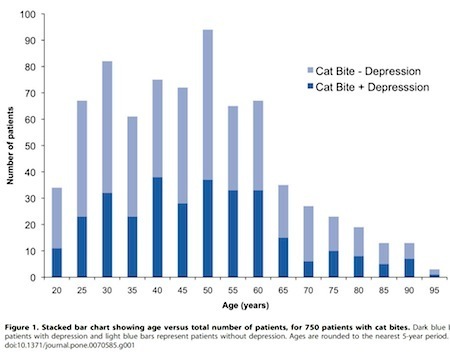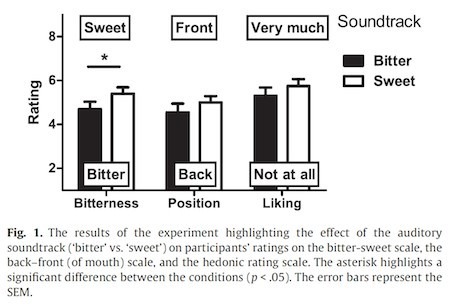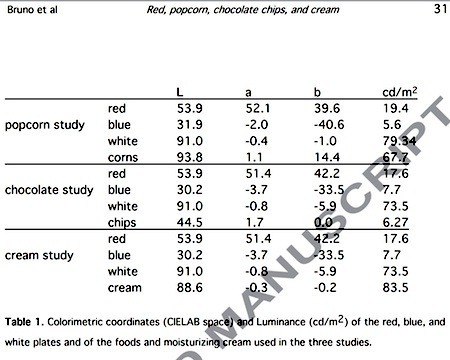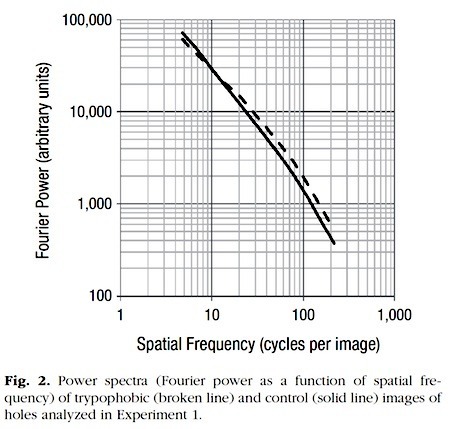Marc Abrahams's Blog, page 466
September 5, 2013
Cat Bites and Human Depression [The Data Miners' Tale]
This study presents a cheery attempt to see if cat bites lead to human depression (or maybe vice versa):
“Describing the Relationship between Cat Bites and Human Depression Using Data from an Electronic Health Record,” David A. Hanauer [pictured here], Naren Ramakrishnan, , PLoS One. 2013 Aug 1;8(8):e70585. (Thanks to Constanza Villalba for bringing this to our attention.) The authors, at the University of Michigan and Virginia Tech, explain:
 “we first used administrative diagnosis codes to identify patients with either depression or bites, drawn from a population of 1.3 million patients. We then conducted a manual chart review in the electronic health record of all patients with a code for a bite to accurately determine which were from cats or dogs. Overall there were 750 patients with cat bites, 1,108 with dog bites, and approximately 117,000 patients with depression. Depression was found in 41.3% of patients with cat bites and 28.7% of those with dog bites. Furthermore, 85.5% of those with both cat bites and depression were women, compared to 64.5% of those with dog bites and depression. The probability of a woman being diagnosed with depression at some point in her life if she presented to our health system with a cat bite was 47.0%, compared to 24.2% of men presenting with a similar bite.”
“we first used administrative diagnosis codes to identify patients with either depression or bites, drawn from a population of 1.3 million patients. We then conducted a manual chart review in the electronic health record of all patients with a code for a bite to accurately determine which were from cats or dogs. Overall there were 750 patients with cat bites, 1,108 with dog bites, and approximately 117,000 patients with depression. Depression was found in 41.3% of patients with cat bites and 28.7% of those with dog bites. Furthermore, 85.5% of those with both cat bites and depression were women, compared to 64.5% of those with dog bites and depression. The probability of a woman being diagnosed with depression at some point in her life if she presented to our health system with a cat bite was 47.0%, compared to 24.2% of men presenting with a similar bite.”
Here’s detail from the study:

Assuming You Are From There, Your Character Cannot Be Assumed
News about character:
“The Inaccuracy of National Character Stereotypes,” Robert R. McCrae, Wayne Chan, Lee Jussim, Filip De Fruyt, Corinna E. Löckenhoff, Marleen De Bolle, Paul T. Costa Jr., Martina Hřebíčková, Sylvie Graf, Anu Realo, Jüri Allik, Katsuharu Nakazato, Yoshiko Shimonaka, Michelle Yik, Emília Ficková, Marina Brunner-Sciarra, Norma Reátigui, Nora Leibovich de Figueora, Vanina Schmidt, Chang-kyu Ahn, Hyun-nie Ahn, Maria E. Aguilar-Vafaie, Jerzy Siuta, Barbara Szmigielska, Thomas R. Cain, Jaret T. Crawford, Khairul Anwar Mastor, Jean-Pierre Rolland, Florence Nansubuga, Daniel R. Miramontez, Veronica Benet-Martínez, Jérôme Rossier, Denis Bratko, Iris Marušić, Jamin Halberstadt, Mami Yamaguchi, Goran Knežević, Danka Purić, Thomas A. Martin, Mirona Gheorghiu, Peter B. Smith, Claudio Barbaranelli, Lei Wang, Jane Shakespeare-Finch, Margarida P. Lima, Waldemar Klinkosz, Andrzej Sekowski, Lidia Alcalay, Franco Simonetti, Tatyana V. Avdeyeva, V. S. Pramila, Antonio Terracciano, epub Journal of Research in Personality, August 22, 2013. (Thanks to investigator Neil Martin for bringing this to our attention.) The authors, from a variety of nations, explain:
“Previous work suggesting that national character stereotypes are inaccurate has been criticized on several grounds. In this article we (a) provide arguments for the validity of assessed national mean trait levels as criteria for evaluating stereotype accuracy; and (b) report new data on national character in 26 cultures from descriptions (N=3,323) of the typical male or female adolescent, adult, or old person in each. The average ratings were internally consistent and converged with independent stereotypes of the typical culture member, but were weakly related to objective assessments of personality.”
Detail from the study:

September 4, 2013
Perception, and the modification of toffee’s environs
Layla Eplett, in the Food Matters blog, explores a new study by Ig Nobel Prize winner Charles Spence:
“Each volunteer was given four pieces of toffee. Two pieces were eaten accompanied by a soundtrack of a lower pitched brass instruments. The remaining toffee was consumed listening to a high pitched piano piece. The result was a bittersweet symphony. Although all of the toffee was the same, volunteers rated toffee consumed during the piano music as sweet while pieces eaten with the lower pitched music were perceived as bitter….”
Here is a detail from the study:
 BACKGROUND: The 2008 Ig Nobel Prize for nutrition was awarded to Massimiliano Zampini of the University of Trento, Italy and Charles Spence [pictured here] of Oxford University, UK, for electronically modifying the sound of a potato chip to make the person chewing the chip believe it to be crisper and fresher than it really is. [REFERENCE: "TheRole of Auditory Cues in Modulating the Perceived Crispness and Staleness ofPotato Chips," Massimiliano Zampini and Charles Spence,Journal of Sensory Studies, vol. 19, October 2004, pp. 347-63.]
BACKGROUND: The 2008 Ig Nobel Prize for nutrition was awarded to Massimiliano Zampini of the University of Trento, Italy and Charles Spence [pictured here] of Oxford University, UK, for electronically modifying the sound of a potato chip to make the person chewing the chip believe it to be crisper and fresher than it really is. [REFERENCE: "TheRole of Auditory Cues in Modulating the Perceived Crispness and Staleness ofPotato Chips," Massimiliano Zampini and Charles Spence,Journal of Sensory Studies, vol. 19, October 2004, pp. 347-63.]

‘How to Write a Scientific Paper’
“… it is difficult to do good science, write good scientific papers, and have enough publications to get future jobs.” – so wrote E. Robert Schulman 0f Charlottesville, Virginia, US, in an article for the Annals of Improbable Research, vol. 2, no. 5, 1996, entitled ‘How To Write A Scientific Paper’.
The difficulties, it seems, continued – for eleven years later another article appeared as an editorial in the Indian Journal of Surgery – ‘How to write a scientific paper’.
And now another opportunity has arisen for those who need to learn how to write a scientific paper. This time in the form of 3 day intensive course with formal lectures and interactive sessions – it’s entitled ‘How to Write a Scientific Paper’ and runs from 18th – 20th September, 2013, at the Dolmen Hotel, Qawra, Malta.
Professor Victor Grech MD, PhD (Malta), PhD (Lond.), FRCPCH, MRCP(UK), DCH Consultant Paediatrician (Cardiol), Mater Dei Hospital, Malta & Associate Professor of Paediatrics, University of Malta, [pictured] and colleagues, will not only explain data entry in Excel, Excel forms and pivot tables, T-tests, Z-test and ANOVA, but also Contingency tables and relative risk, Odds ratio, confidence intervals for a proportion, and much more.
(Cost €190 – €350, and eligible for 15 international CME points)
COMING SOON : Professor Grech examines aspects and implications of infertility in selfcontained cult sci-fi subgenres.

September 2, 2013
One Should Not Taser a Pregnant Police Officer or a a Methamphetamine-intoxicated sheep?
It has been suggested that someone, somewhere might question the assumption that it’s an excellent idea to taser a pregnant police officer,and that someone—perhaps someone else—might question the assumption that it’s an excellent idea to taser a methamphetamine-intoxicated sheep.
These two studies investigate those possibly related questions:
“The Pregnant Officer,” Fabrice Czarnecki [pictured here], Clinics In Occupational and Environmental Medicine, vol. 3, no. 3, August 2003, pp. 641-648. The author, who “is the Director of Medical-Legal Research with The Gables Group, Inc., a business intelligence and investigative consultancy based in Miami, FL, and the Director of Training of the Center for Homeland Security Studies, a non-profit corporation conducting training in counter-terrorism and intelligence for domestic law enforcement,” explains:
“The taser is an electrical restraint device that is used in law enforcement. It is common for officers to have the taser applied to themselves during training…. Pregnant officers should not be subjected to the taser…”
and
“Effect of an Electronic Control Device Exposure on a Methamphetamine-intoxicated Animal Model,” Donald M. Dawes MD, Jeffrey D. Ho MD, Jon B. Cole MD, Robert F. Reardon MD, Erik J. Lundin MS, Karen S. Terwey MD, Dan G. Falvey, James R. Miner MD, Academic Emergency Medicine, Volume 17, Issue 4, pages 436–443, April 2010. (Thanks to investigator Ivan Oransky for bringing this to our attention.) The authors, at University of Louisville, KY; and Hennepin County Medical Center, Minneapolis, MN, explain:
“Sixteen anesthetized Dorset sheep (26–78 kg) received 0.0 mg/kg (control animals, n = 4), 0.5 mg/kg (n = 4), 1.0 mg/kg (n = 4), or 1.5 mg/kg (n = 4) of methamphetamine hydrochloride as a slow intravenous (IV) bolus during continuous cardiac monitoring. The animals received the following exposures in sequence from a TASER X26 ECD beginning at 30 minutes after the administration of the drug: 1) 5-second continuous exposure, 2) 15-second intermittent exposure, 3) 30-second intermittent exposure, and 4) 40-second intermittent exposure. Darts were inserted at the sternal notch and the cardiac apex, to a depth of 9 mm.”

Ig Nobel filmmaker tries to retrieve deleted email
Bahram Sadeghi documented his recent attempt to recover a deleted email message. Sadeghi telephoned the NSA (America’s National Security Agency). The NSA is known to record and store much of the world’s email traffic. He asked: ”I understand you keep track of lots of e-mails and internet data, can you help me? The conversation continued from there:
The Washington Post later interviewed Sadeghi about this.
Sadeghi was born in Iran. For many years now he has lived in the Netherlands, where he makes films. We met him some years ago when he produced a series of six mini-movies about Ig Nobel Prize winners. Here are those short films:

Effect of the Color Red on Something and Something Else
Red is a color pertaining to the subject of this study:
 “The Effect of the Color Red on Consuming Food Does Not Depend on Achromatic (Michelson) Contrast and extends to Rubbing Cream on the Skin,” Nicola Bruno [pictured here], Margherita Martani, Claudia Corsini, Claudio Oleari, Appetite, August 31, 2013. (Thanks to investigator Neil Martin for bringing this to our attention.) The authors, at the Università di Parma, Italy, explain:
“The Effect of the Color Red on Consuming Food Does Not Depend on Achromatic (Michelson) Contrast and extends to Rubbing Cream on the Skin,” Nicola Bruno [pictured here], Margherita Martani, Claudia Corsini, Claudio Oleari, Appetite, August 31, 2013. (Thanks to investigator Neil Martin for bringing this to our attention.) The authors, at the Università di Parma, Italy, explain:
“Recent literature suggests that individuals may consume less food when this is served on red plates. We explored this intriguing effect in three experiments. Independent groups of participants were presented with constant amounts of popcorns, chocolate chips, or moisturizing cream, on red, blue, or white plates. They were asked to sample the foods (by tasting them) or the cream (by rubbing it on the hand and forearm) as they wished and to complete mock ‘sensory analysis’ questionnaires. Results confirmed that red plates reduce taste-related consumption and extended this effect to the touch-related consumption of moisturizing cream. Suggesting that the effect was not due to a decrease in the consciously experienced appeal of products on red plates, overall appreciation of the foods or cream did not differ according to plate color. After careful photometric measures of the materials used for each food-plate pairing, we determined that food and cream consumption was not predicted by Michelson (achromatic) contrast. Although the origin of the intriguing effect of the color red on consumption remains unclear, our results may prove useful to future potential explanations.”
Here is a detail from the study:

Filling a Gap in our Knowledge of a Fear of Holes
This research paper is one of the first to make repeated use of the word “trypophobia”:
“Fear of Holes,” Geoff G. Cole [pictured here] and Arnold J. Wilkins, Psychological Science, epub August 27, 2013. (Thanks to investigator Neil Martin for bringing this to our attention.) The authors, at the University of Essex, UK, explain:
 “Phobias are usually described as irrational and persistent fears of certain objects or situations, and causes of such fears are difficult to identify. We describe an unusual but common phobia (trypophobia), hitherto unreported in the scientific literature, in which sufferers are averse to images of holes. We performed a spectral analysis on a variety of images that induce trypophobia and found that the stimuli had a spectral composition typically associated with uncomfortable visual images, namely, high-contrast energy at midrange spatial frequencies. Critically, we found that a range of potentially dangerous animals also possess this spectral characteristic. We argue that although sufferers are not conscious of the association, the phobia arises in part because the inducing stimuli share basic visual characteristics with dangerous organisms, characteristics that are low level and easily computed, and therefore facilitate a rapid nonconscious response.”
“Phobias are usually described as irrational and persistent fears of certain objects or situations, and causes of such fears are difficult to identify. We describe an unusual but common phobia (trypophobia), hitherto unreported in the scientific literature, in which sufferers are averse to images of holes. We performed a spectral analysis on a variety of images that induce trypophobia and found that the stimuli had a spectral composition typically associated with uncomfortable visual images, namely, high-contrast energy at midrange spatial frequencies. Critically, we found that a range of potentially dangerous animals also possess this spectral characteristic. We argue that although sufferers are not conscious of the association, the phobia arises in part because the inducing stimuli share basic visual characteristics with dangerous organisms, characteristics that are low level and easily computed, and therefore facilitate a rapid nonconscious response.”
Here is a detail from the study:
BONUS: A video tribute to some of the world’s largest holes:

Booing research
Hugh (Dr. House) Laurie, appearing on The Graham Norton Show (Series 9 Episode 4) explains that in Germany, the word (or sound) for ‘Boooo’ is, instead ‘Ooooh’. [from 1:00 onwards]
The incident is backed up by academic research :
“Until the nineteenth-century, there is no evidence of booing: hissing and whistling are generally preferred. Booing is now widespread in Britain and the United States, but less common elsewhere.”
Dan Rebellato, who is professor of Contemporary Theatre and Head of Department at Royal Holloway, University of London, (and who is an associate editor of Contemporary Theatre Review) explains in a paper for Contemporary Theatre Review, Volume 23, Issue 1, 2013, entitled, simply : ‘Booing’
The full text may be found here :

September 1, 2013
Medical quack warning from the 1950s
This warning about medical quackery, made in the 1950s, is still pertinent. It stars actor Raymond Massey:

Marc Abrahams's Blog
- Marc Abrahams's profile
- 14 followers








